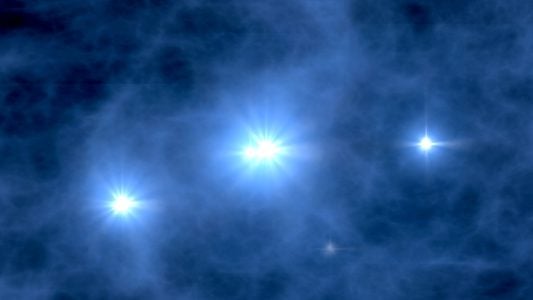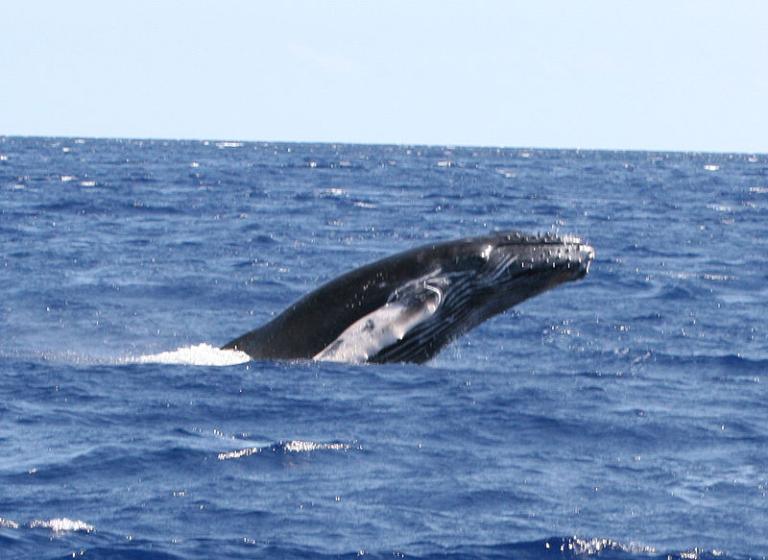
(Wikimedia Commons public domain image)
I carry on now with my loose appropriation, for my own nefarious purposes, of the online “List of Fine-Tuning Parameters” compiled by Jay W. Richards. (My first entry taken from his list and explicitly dependent upon it is this one: “An initial survey of the “four fundamental forces” and the “cosmological constant.””) As I said in that first blog post, I claim no originality here, and I may never claim any (though I’ll eventually rework these notes in successive stages as I draw upon and incorporate materials from other sources for a much larger project that I have in mind). Dr. Richards follows his list of five “Cosmic Constants,” which I briefly discussed in the prior blog entry mentioned just above, with a list of four “Initial Conditions and ‘Brute Facts’.” I’ll discuss them briefly below.
- Initial distribution of mass energy
Initial or boundary conditions are the conditions that were present at the beginning of the universe; they seem to be entirely independent of the physical constants already mentioned. One way of summarizing the initial conditions is to speak of the extremely low entropy (that is, the highly ordered) initial state of the universe. This refers to the initial distribution of mass energy at the very first point at which we can begin to determine what it was. In his book The Road to Reality, the Nobel laureate mathematical physicist Roger Penrose estimates that the odds of the initial low entropy state of our universe occurred by chance alone are on the order of 1 in 1010(123).
To say that this ratio is far beyond mortal human power to comprehend doesn’t begin to do it justice. Most of us don’t even really deal with exponential notation anyway — or, at least, we haven’t since our school days. So maybe a slight refresher is in order:
102 is 10 x 10, which, of course, equals 100. (Note that 102 can be written out as a 1 followed by two zeros.) 103 would be 10 x 10 x 10 = 1000. (That’s a 1 followed by three zeros.) So 1010 would be 10 x 10 x 10 x 10 x 10 x 10 x 10 x 10 x 10 x 10 = 10,000,000,000 — a rather large number. Ten billion. A 1 followed by ten zeroes.) More to the point, one in ten billion would be a very small number. But the number proposed by Roger Penrose is far, far smaller than that. Because it’s 1010(123), which is a fraction in which the numerator is one and the denominator is ten billion multiplied by ten billion one hundred and twenty-three (123) times. To put this into inconceivable perspective, the commonly accepted figure for the number of particles in the observable universe — that is, for the total number of protons, neutrons, neutrinos, and electrons — is 1080. Which can’t even really be said to begin to approach the vast number proposed by Sir Roger.
Now, this ratio should be more than enough in and of itself to raise the question: Why does such a universe exist? “If someone is unmoved by this ratio,” remarks Jay Richards, “then they probably won’t be persuaded by additional examples of fine-tuning.”
But we proceed a bit further, with “brute facts” that just happen to be so but that are essential for life to exist in our universe:
- Ratio of masses for protons and electrons
If this ratio were even slightly different, the building blocks for life (such as DNA) could not have been formed.
- Velocity of light
If the velocity of light were higher than it is, stars would be too luminous. If it were lower than it is, stars would not be luminous enough.
- Mass excess of neutron over proton
If the ratio of the mass of neutrons over protons were greater than it actually is, there would be too few heavy elements in the universe for life to arise. If it were smaller than it is, luminous, life-giving, element-generating stars would quickly collapse into neutron stars or black holes.
Background, as I understand it: Immediately after the Big Bang, which is to say before the first stars in the universe were ever formed, the universe consisted of hydrogen (the first element in the periodic table), helium (the second element in the periodic table), and essentially nothing else. These are the lightest of the elements, and life cannot arise from them alone or survive on the basis of them alone. The early universe made almost nothing else for the simple and sufficient reason that it was so hot and dense in the earliest stages that any elements that it might fuse together it also immediately blasted apart again. Only when the universe had cooled down enough that elements weren’t immediately split apart — perhaps a little more than three minutes into its existence — could other elements of the periodic table begin to appear. Even so, 99.999999% of the elements in the earliest universe were either hydrogen or helium, and not much new began to appear beyond helium until stars commenced to form, several hundred million years after the Big Bang.
Shouldn’t such things make us at least a tad curious?
The Canadian philosopher John Andrew Leslie has created a parable to help us think about this question:
Suppose that you’re about to be executed. Ten skilled marksmen armed with rifles are lined up a few feet away; you’re blindfolded and placed against a wall. You hear the officer say “Fire!” and the rifles roar. However, to your surprise and relief, you’re still alive. Untouched, even.
How do you react?
Do you simply respond that, well, that’s the way it is, and then walk away without any questions? Such a reaction would be remarkably incurious, even extremely strange.
Alternatively, you might reason that even the best riflemen sometimes miss and that, if enough executions happen, there must surely be one, somewhere, sometime, in which all 10 members of the firing squad completely miss their target at close range. You simply happen to be the lucky one. Question disposed of. Move along. There’s nothing more to see.

We went out whale-watching today in the Maui Nui Basin, off Lahaina, between Maui and Lānaʻi. It was one of our best whale-watching experiences ever. Most of our time was spent watching a mother humpback and her baby, along with their male “escort” and another male that was trying to supplant the first in her attention. There was a lot of action, and some real battling. We couldn’t see most of it, of course, as it happened beneath the surface. But they were always close to the top, and when we could see them, there was even a bloody nose on one of the males. We could see them jostling for position, with the one repeatedly blocking the other. And then, later, we watched another baby doing repeated breaches. Loads of fun.
It seems to me quite a challenge to derive the humpback whales of Maui from a random chain of coincidences going back to the Big Bang.
Posted from Ka‘anapali, Maui, Hawai’i












